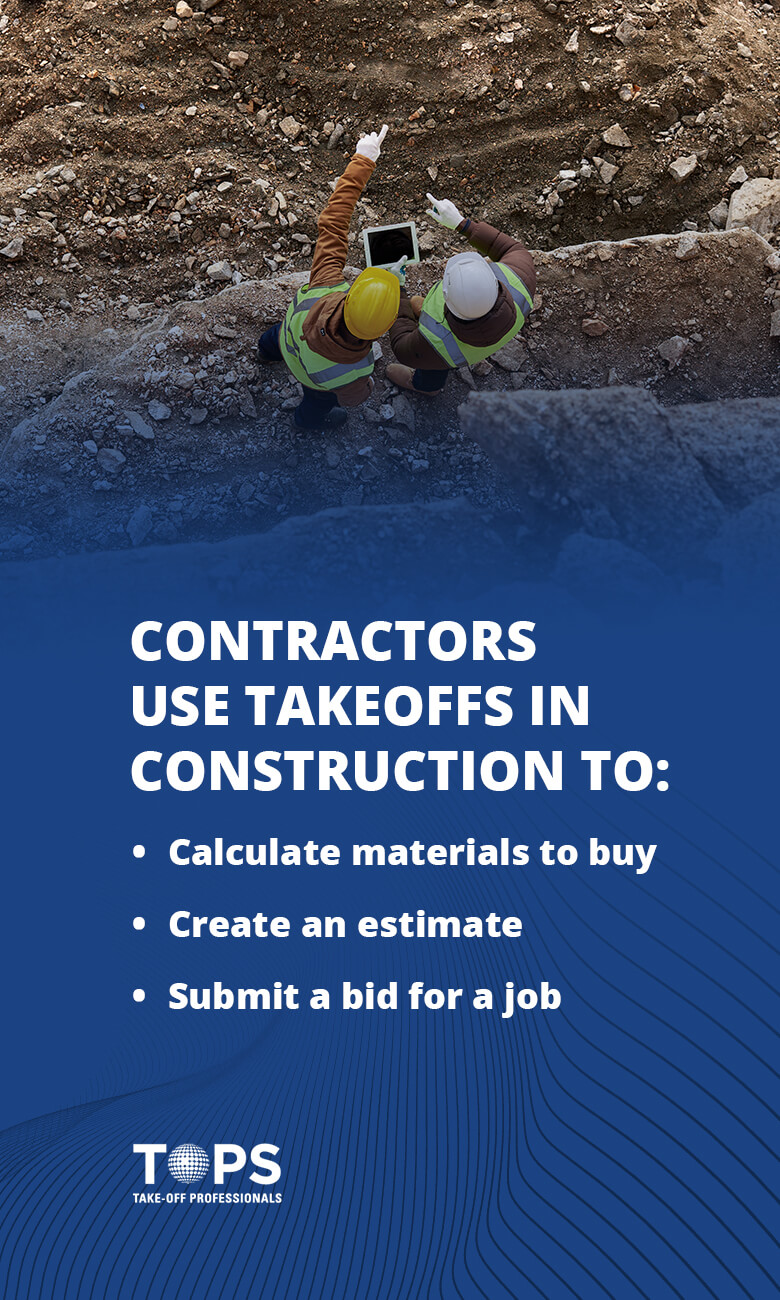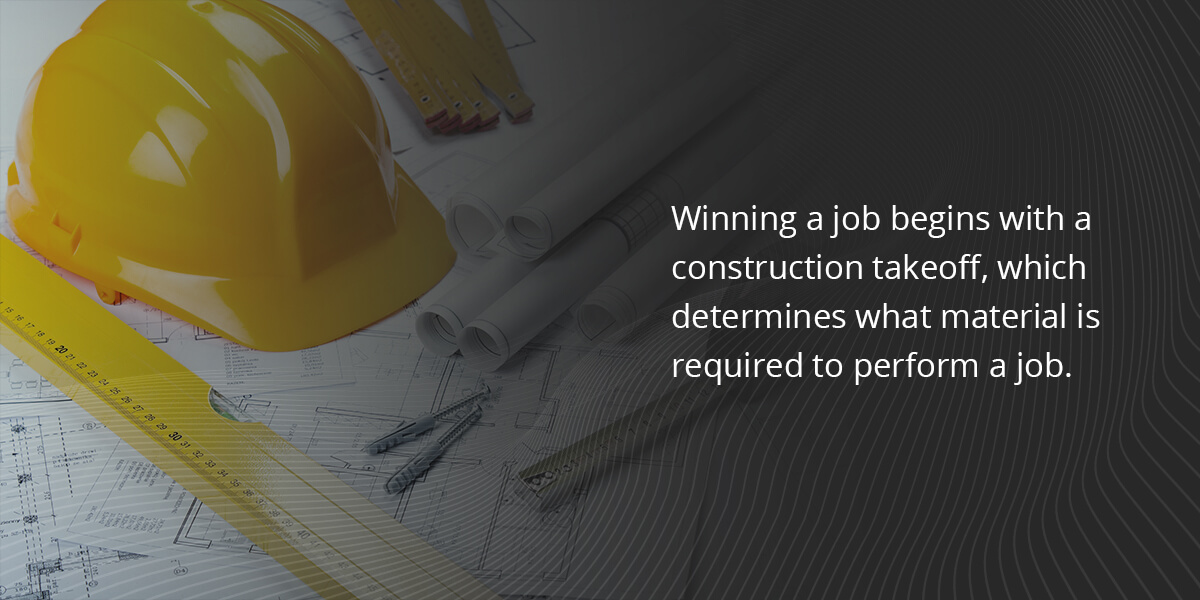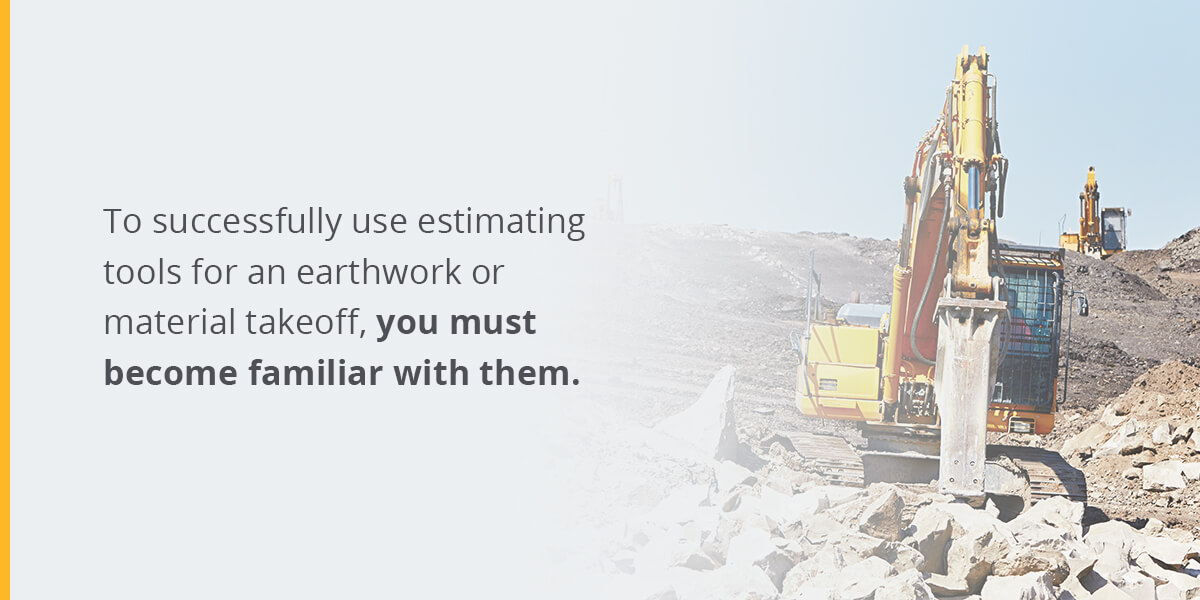Estimating an earthwork takeoff accurately is essential to achieve success and avoid costly consequences. When you become efficient at earthwork takeoffs, you can grow a successful business providing contractors with accurate takeoffs.
As a civil contractor, you likely use many machines, including machine control motograders, dozers, pavers, skid steers, soil compactors and asphalt compactors. You have internal surveyors or grade checkers who stake, monitor progress and validate grade on the job site, along with drones or full-scale aircraft to capture data via photogrammetry to be transformed into point clouds.
At Take-off Professionals, we know how time-consuming and complex construction takeoffs can be, and we use point cloud data for 3D earthwork modeling. This guide to having a successful earthwork takeoff will help you understand every important aspect of this process.
What Is Earthwork?
Earthwork refers to the engineering process of adding, moving or removing materials like rock and soil to change the topography of a location. Compare the current topography and the proposed design to establish a 3D earthwork calculation. Creating an accurate estimate involves calculating how much material a contractor needs to fill or cut.
- Filling: One of the key parts of the process is filling, which is when the contractor adds material to the site.
- Cutting: Another part of the process is cutting, which is when the contractor removes material.
Filling and cutting are both essential for developing the topography in the contractor’s design. Engineers calculate the fill and cut quantities to reach and use a mass balance for an accurate earthwork estimate. An earthwork takeoff can be manual or digital.
- Manual earthwork takeoffs: Manual takeoffs are often laborious and complex, and even a small error can lead to significant calculation issues.
- Digital earthwork takeoffs: A digital earthwork takeoff involves software that tends to be more accurate, easier and faster than a manual process.
A successful earthwork takeoff can lead to a more precise estimate and help the job go smoothly.

What Does Takeoff Mean in Construction?
In the construction industry, a takeoff is the process in which a contractor determines the amount of every material needed for a project. You may also hear this referred to as a material or quantity takeoff. Contractors use takeoffs in construction to:
- Calculate materials to buy: One of the most important uses of a takeoff is determining how much material is needed. Underbuying can lead to job site delays and more trips to purchase additional materials. Buying too many materials can cut into your profit. This calculation also influences how accurate your estimate and bid are.
- Create an estimate: To create an accurate estimate, you need to know how much material is required. This allows you to calculate other costs for your estimate, such as labor hours, waste percentage and tax.
- Submit a bid for a job: A takeoff is essential for knowing how much to bid for a job. If you underbid, you could lose money. If you overbid, you could lose out on a job.
A takeoff determines how much material is needed for a job, while an estimate also includes the costs of these materials and other expenses related to the project, such as tax, labor costs and travel costs. Earthwork takeoffs go by a few other names, including construction takeoffs, material takeoffs, estimating takeoffs and material estimating. Developing a precise earthwork estimate is key to a construction project. Ideally, a bid should accurately reflect material and labor costs, so you can minimize financial risks and obtain the project fee you deserve.
An estimator or group of estimators is responsible for a takeoff. A large company tends to have a team of estimators with a chief estimator who is responsible for assigning projects and handling the bid calendar. A smaller company may have a single estimator who handles takeoffs. Examples of professionals who may be in charge of earthwork takeoffs include:
- Landscapers
- Civil engineers
- Marine architects
- Subway architects
- Energy contractors
- General contractors
- Tunneling architects
- Mechanical engineers
- Residential renovators
- Construction managers
- Residential home builders
- Road and highway engineers
Outside of construction estimators, some organizations may place the responsibility for performing takeoffs on sales employees and material suppliers.
Earthwork Estimating Methods
Engineers can use a few different estimating methods to create 3D data for earthwork. You can use one of these methods to calculate the material and dirt quantities needed to provide the construction site with mass haul analysis.
- Block method: Also known as the division of square method, the block method is used to determine volume for a medium-sized project that requires leveling. However, there is some margin of error with the block method if a project involves both cutting and filling.
- Average method: The average method tends to be used for smaller projects. This is the simplest estimating method used only for projects that require cutting or filling. If a project uses both filling and cutting, the average method will give you an inaccurate estimate.
- Section method: The most precise and complex estimating method is the section method. This method is best for large projects like roads, dams and railway systems. Though this method involves more complicated calculations and steps, it gives the most precise estimate.
Choose which estimating method you use based on the size of the project and how precise you want your estimate to be.
Estimating Earthwork Takeoff Software
One of the common earthworks costs is earthwork estimating software. As an estimator, you’re in a race against the clock during an earthwork takeoff and estimate. You frequently juggle multiple projects and deal with inaccurate or incomplete design plans. Bidding too low or too high could mean losing a job or taking a loss. This is where estimating earthwork takeoff software comes in.

Winning a job begins with a construction takeoff, which determines what material is required to perform a job. Your software can calculate your material costs by multiplying the price of the material by the number of units and adding in the cost of equipment, labor, fees, insurance, administrative personnel and subcontractors. Cloud-based software can also improve collaboration among your team.
If several people are involved in making an estimate, collaboration is an important element. Cloud-based software means your system is accessible from anywhere and you won’t have to worry about updating or maintaining the system. If you want to track historical trends and reuse information, estimating software can be beneficial. When it comes to collecting data and using it later, this software is essential.
If you have been performing manual takeoffs, deciding to invest in software can be challenging, but it’s generally the best option for your business. In particular, this software can be incredibly helpful if you take on more than a couple of commercial projects per year. Features of earthworks software may include:
- Grid views
- Pad takeoff
- Material library
- Trench profiling
- Retaining wall takeoff
- Strata layer breakdowns
- Multi-color, 3D elevation maps
- Cut and fill estimating program
At Take-off Professionals, we can apply our data services to several software programs for civil engineering in the construction industry.
- Primavera: Project managers use Primavera to ensure compliance and keep projects on track. Primavera can have a bit of a learning curve, so you may want to attend a training course before you start using the software. With this program, you can avoid overrunning deadlines and increase the efficiency of your planning. Features of Primavera include real-time reporting, multiuser system, multi-device capabilities, risk management capabilities and standardization. If you want to improve productivity on a construction site, Primavera can be a worthwhile investment.
- AutoCAD: In the construction industry, AutoCAD is among the most commonly used programs. This computer-aided design (CAD) program lets you create and edit drawings. Some features included in AutoCAD are smart dimensioning, cloud integration, photorealistic rendering, 3D modeling and visualization, and import and export of PDF and DGN. These features make the software accessible, versatile and user-friendly.
- Civil 3D: Similar to AutoCAD, Civil 3D is more advanced software that lets you dive deeper into a project via multiple profiles, alignments and surfaces.
- Bluebeam: This PDF editor can be used for various workflows, including submittal, document planning and quality control. If a CAD program is too complex for a task, Bluebeam may be a good option. Features of this program include standardization, collaboration, multi-device capabilities and CAD plugin.
- Microsoft Excel: Likely the most commonly used civil engineering program, Microsoft Excel allows engineers to perform various functions, from simple calculations to project tracking. Excel includes several helpful features, such as templates, visualization, storage, flexibility and calculation. If you need to improve your knowledge of Excel to leverage the program successfully, you can quickly find an online training workshop or affordable course.
- Microsoft Access: Alternatively, you may want to work in Microsoft Access if you create extensive spreadsheets. Access is found in the Microsoft 365 Suite and used to build databases, store data, add forms to databases, facilitate collaboration and export data.
If you want to implement estimating software, select an option that integrates with your construction management program. When you choose to work with us at Take-off Professionals, all we need is your paper plans, CAD files and a completed work order.
Become Familiar With Estimating Tools

To successfully use estimating tools for an earthwork or material takeoff, you must become familiar with them. As an estimator, you should also understand the construction process and the use of the estimate. Becoming familiar with these aspects can help you leverage your tools more effectively for an excavation takeoff.
Owners either request a preliminary bid or full life cycle analysis. You may be working with only a description of the project at the beginning rather than drawings. This means you’ll need to price the whole scope of the project, not just what is shown. Default unit pricing doesn’t always account for every factor that may impact the price of labor and materials, such as supply chain issues, availability of certain trades and construction volume. Be sure to include these factors in an estimate.
Start with a properly set scale for a successful takeoff. In some cases, a provided scale is inaccurate or not included in the blueprints. Beginning with setting or checking the scale will ensure your measurements are accurate. Being accurate, thorough and quick are all key to a successful takeoff. At Take-off Professionals, we use your designs to create precise earthwork estimates.
Common Takeoff Pitfalls
For a construction project, a takeoff is necessary. While residential contractors may be able to estimate the materials needed for a project simply by eyeballing the house, this skill doesn’t translate to most commercial projects. Generating an accurate estimate is essential for a successful project. However, some pitfalls could impact an estimate and takeoff. Inaccurate measurements and missed deadlines are two of the most common takeoff pitfalls.
- Inaccurate measurements: Whether due to a complex digital process or a manual takeoff, inaccurate measurements can occur and impact a takeoff. When you move data between tools, you risk making mistakes. You may be transferring data from paper to Excel or from your takeoff program to an estimating software. During manual data entry, a single typo or distraction can throw your entire estimate off.
- Missed deadlines: Missing bid deadlines is a common takeoff pitfall that can occur when the takeoff doesn’t leave extra room for creating a detailed estimate. This happens most often with manual takeoffs. Even if you work around the clock, attempting to complete an estimate during a time crunch may lead to missed deadlines and wasted hours.
As an estimator, you must know exactly the amount of materials on a structure and bid on several jobs simultaneously. Though you can use a ballpark estimate to get enough materials that you can reuse later, paying for them upfront may negatively impact your cash flow. Too high of an estimate could mean you miss out on a job. Some contractors will want to see a completed takeoff or will do their own takeoff to check your work. Fortunately, you can avoid the common takeoff pitfalls above by implementing earthwork takeoff software.
Contact Us at Take-off Professionals
At Take-off Professionals, we create 3D data for layout and machine control, including machines, grading surfaces, curb machines, pavers and 3D utility layout and utility trenches for rovers. We provide earthwork takeoffs with material and dirt quantities and mass haul analysis for roads and sites, so you can return to managing your business and building projects. Additionally, we can develop haul roads for the project’s life cycle, including:
- Custom home lots
- Subdivisions
- Schools commercial sites
- Streets
- Highways
Since 1988, we have been helping busy contractors who need support with takeoffs. We design our takeoff services to meet your specific needs. We can ensure you have the necessary information based on the best possible earthwork takeoffs, which can help you improve your productivity. With better work efficiency and bidding accuracy, you can save money and enjoy greater profits. When you’re ready for a successful earthwork takeoff, contact us at Take-off Professionals to learn more.

